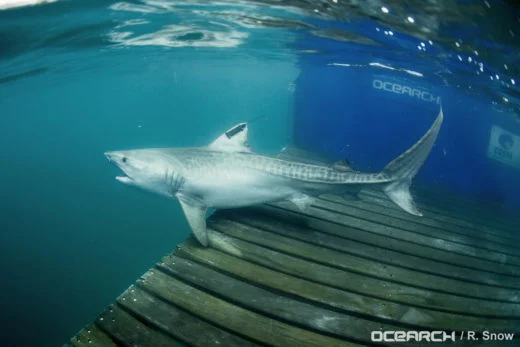By Mariano Castro and César Peñaherrera
For years, scientists from the Migramar network have conducted research in the Eastern Tropical Pacific (ETP) region. Their research shows that, despite being divided by political borders, the region shares an immense estructural and ecological connectivity. Notwithstanding, scientists have also identified the pressures caused by
unsustainable human activities.
Faced with the urgent need to protect the rich marine biodiversity and connectivity of the region, they have proposed the creation of Swimways (MigraVías), a set of conservation projects that create marine corridors between protected areas and other patches of marine habitats, , such as seamounts and underwater ridges, increasing the mobility and range of many species and allowing the gene flow and diversity to be maintained between local populations (MigraMar, www.migramar.org) [1]
Swimways are “superhighways” used by marine migratory species, particularly endangered ones such as green sea turtles, thresher sharks, scalloped hammerhead sharks and pacific leatherback turtles to migrate between biodiversity hotspots. This is the case of the Cocos – Galapagos Swimway, a marine corridor that follows a seamounts ridge that connects Cocos Island in Costa Rica with the Galapagos Marine Reserve in Ecuador. Both marine reserves serve as a refuge for many marine species, however, when they move beyond the limits of the MPAs they fall under the pressure of industrial fishing.
Protecting the swimway is critical for the conservation of many of the marine species that inhabit Cocos Island National Park and the Galapagos Marine Reserve. Experts estimate that around 19% of rays, 34% of sharks, 17% of marine mammals, and 27% of marine birds that live in both MPAs are threatened or in danger of extinction (Peñaherrera-Palma et. al, 2018), mainly due to overfishing and bycatch. In December 2021, Costa Rica announced the expansion of Cocos Island National Park. Likewise, the government of Ecuador created in January 2022 a new marine reserve in Galapagos, expanding the protection of this biodiversity hotspot by 60,000 square km. These announcements are an important step for the protection of a large part of the Cocos Galapagos Swimway and the Eastern Tropical Pacific Marine Corridor.
MPAs not only provide protection and support the resilience of vulnerable ecosystems, but they are also key to maintain and generate goods and services
(IEEP 2021) [1] . On this regard, experts estimate that the Eastern Tropical Pacific produces around USD $12.000 million per year in carbon sequestration and more than USD $2.000 million resulting from the exploitation of the ten most important commercial fishing species (Martin et. al, 2016 cited in Peñaherrera-Palma et. al, 2018) [2] . Non-extractiveNon extractive activities also bring important revenues to both countries. Tourism in Galapagos generate an average of USD $236 million per year (Lynham et al. 2015 cited in Migramar, 2021). [3] For its part, Cocos generated USD $19.7 million in 2019 (SINAC, 2020 cited in Migramar, 2021).
Protecting the Cocos – Galapagos Swimway is an investment in the future. The protection of this area is a great opportunity for both governments to strengthen binational cooperation and develop social and economic opportunities, particularly providing benefits to the fisheries that operate in surrounding areas and to the tourism sector, which is of great relevance for both countries.
___________________________________________________________________________________________________________________
[1] Institute for European Environmental Policy (2021) “The economic benefits of marine protected areas in
Europe”. Available at: https://ieep.eu/publications/the-economic-benefits-of-marine-protected-areas-in-
europe (Accessed: 26 October 2021)
___________________________________________________________________________________________________________________
[1] Migramar (no year) Migravias [Online]. Available at: https://migramar.org/en/migravias (Accessed: 9 August 2021)
[2] Peñaherrera-Palma C., Arauz R., Bessudo S., Bravo-Ormaza E., Chassot O., Chinacalle-Martínez N., Espinoza E., Forsberg K., García-Rada E., Guzmán H., Hoyos M., Hucke R., Ketchum J., Klimley A.P., López-Macías J., Papastamatiou Y., Rubin R., Shillinger G., Soler
G., Steiner T., Vallejo F., Zanella I., Zárate P., Zevallos-Rosado J. y A. Hearn. 2018. “Justificación biológica para la creación de la MigraVía Coco-Galápagos”. MigraMar y Pontificia Universidad Católica del Ecuador Sede Manabí. Portoviejo, Manabí, Ecuador.
[3] Migramar (2021) Recomendación técnica de MigraMar sobre la propuesta de expansión del Parque Nacional Isla del Coco (PNIC) y del Área Marina de Manejo Montes Submarinos (AMM-MS) del Área Conservación Marina Cocos (ACMC)
4 O’Leary, B.C., Winther-Janson, M., Bainbridge, J.M., Aitken, J., Hawkins, J.P. and Roberts, C.M. (2016), Effective Coverage Targets for Ocean Protection. CONSERVATION LETTERS, 9: 398-404.
- Zuñiga A. 2021 “U.S. cites Costa Rica for fishing non-compliance”. The Tico Times. Available at:
https://ticotimes.net/2021/08/19/u-s-cites-costa-rica-for-fishing-non-compliance (Accessed: 8 October 2021) - Holland J. 2021 “EU hits Ecuador with yellow card”. SeafoodSource. Available at:
https://www.seafoodsource.com/news/supply-trade/eu-hits-ecuador-with-yellow-card (Accessed: 8 October 2021)









